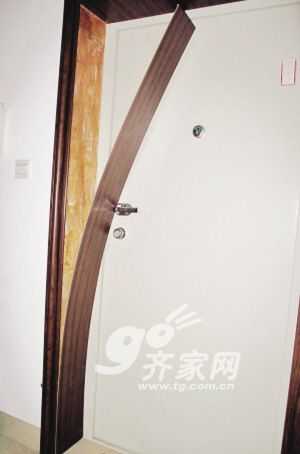Toilet door moldy how to do a lot of process processes
Mr. Fang, the owner, was very annoyed lately. A section of the paint under the door of her own bathroom was blistered, and mildew developed. How to do bathroom door moldy? Experts cautioned that the internal waterproofing process in the bathroom is very important, and many owners are deeply aware of this when learning decoration knowledge. After all, the bathroom is the most frequent area for water use in each household. When it comes to the moisture protection of the door cover, I only know how to pad moisture-proof paper and varnish. In the eyes of experts, bathroom damp proof is not a simple project. It is closely related to the selection of materials and construction procedures. If we neglect the necessary procedures, we may encounter the same situation as Mr. Fang’s.

1. Several layers of varnish should be added on the back of the door sleeve
According to the relevant regulations of the country, all door pockets that come into contact with the bathroom wall must be damp-proof. The conventional moisture treatment mainly includes the following aspects. When the owner renovates the house, it may wish to pay attention to the workers to spend more time and energy in these places.
First, the blockboard blockboard contact with the wall surface (that is, the back of the blockboard) must be painted varnish, it is best to brush a few more, so as to block the water vapor transmitted from the wall to the door sleeve;
Second, if the bathroom does not have a threshold stone, then the door cover should be vacated with the ground a distance of about 1cm, so that it can block the water vapor from the bathroom floor infiltration set;
The third is to put a layer of fireproof board on the back of the door so that it can block the water vapor infiltrating into the doorway.
Fourth, on the side of the toilet door line, choose ceramic tiles and stone. These materials are beautiful and not afraid of water.
Expert advice: There are two ways to solve Mr. Fang's problem. One is to use brush and paint to cover the mold. This is a solution to the problem; it can also replace the veneer and cut off the mouldy section. The wood board is replaced with a new blockboard. This method has a larger amount of work, but it can be rooted.
2, the door cover is as wide as the door hole
Bathroom moisture protection also pay attention to the construction process. If the construction sequence of tiles, rocker, and door covers is wrong, water vapor may seep into the starter. The correct construction process should be to first paving the floor tiles, then making the threshold stone, and then making a door cover on the top of the threshold stone, and the width of the threshold stone should be as wide as the original door opening. Follow the direction from left to right to install the door cover. Avoid direct contact between door pockets and materials containing moisture.
3, cement mortar to dry in the winter 7 days
In fact, in the eyes of the experts, it is not just the bathroom door pockets that should be kept in mind when it comes to moisture protection. As long as the cement mortar is used as the grass-roots wood, it will be moldy, which is why the cement mortar base must be done in advance. Some project managers had to cross construction between mason and woodworkers in order to meet deadlines. This is unscientific and is not conducive to the distribution of water vapor in cement mortar. The correct approach is to fully prevent moisture and ensure that the moisture in the cement mortar can evaporate completely. Generally, it is necessary to wait for three days after the mason finishes to air dry for carpentry (mainly woodworking for door-sleeve, fixed furniture, etc. that directly contact the wall. Project), and the drying time in winter is at least 7 days.
In addition, during the construction process, experienced workers will also skillfully leave a small gap between the tiles and the wall so that the moisture inside the tiles can be volatilized freely, instead of only allowing the wood to absorb the wood and mold. .
Experience with three trees Paint tile Paint Cement Interior decoration Home decoration House Decoration Toilet Waterproof Bathroom Tiles Bathroom Tiles Bathroom Doors
Drum granulation is one of the production processes of compound fertilizers. Hot steam is sprayed on the raw material sent from the crusher by the steam sprayer in the granulation drum, so that the raw material is wet. Since the raw material contains small particles, a raw material such as ammonium, clay and the like are attached to the small particles afterwards, and then The roller slowly rolls up again until it becomes a round granular.
NPK Tumbling Granulation,Blue Color Granular NPK,NPK Fertilizer 12-12-17,Compound NPK Fertilizer
SHIJIAZHUANG HAN HAO TRADE CO., LTD. , http://www.hhfertilizers.com